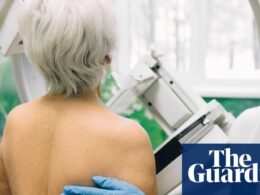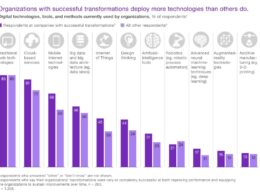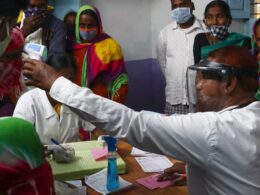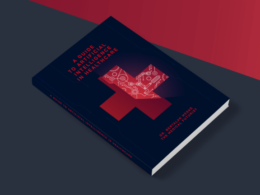healthtransformation
.foundation
Joaquim Cardoso MSc
February 24, 2024
This is an excerpt of the World Cancer Day 2024 Equity Report published by the Union for International Cancer Control (UICC) on February 4, 2024.
Message
A common thread in the report is the fact that cost-efficient, accessible measures to improve awareness of cancer risk factors, and early detection of disease with accessible quality treatment, could help prevent up to 50% of all cancers.

Introduction
Foreword: Addressing health inequities to close the care gap
As individuals and organisations in countries around the globe join forces for World Cancer Day, the central theme of the campaign, ‘Close the Care Gap,’ is more relevant than ever.
This campaign theme is not just a slogan; it’s a commitment to action. Cancer touches lives indiscriminately, but the level of care that people receive is far from equitable. Over three years, the campaign has focused on raising awareness, encouraging tangible change, making sure that quality health services are accessible to all, irrespective of their personal circumstances.
This vision of a fairer and more equitable world when it comes to health is what we aim to address in this report. Our goal is to bring to light the contrasts in cancer journeys experienced in different geographies and how can we improve access to cancer care and health for all. It’s about putting people and their diverse experiences at the centre of our discussion and our actions.
Nations around the world are actively working to bridge the gaps in their countries. But there is still much work that can and needs to be done to ensure that everyone, everywhere has access to the care they need and deserve.
This World Cancer Day Equity Report offers heartfelt testimonies, experiences, perspectives and expert insights from current and former UICC Board Members into the issue of equity in cancer care. It’s about understanding, addressing, and ultimately overcoming the disparities that exist in cancer treatment and access worldwide.
A common thread in the report is the fact that cost-efficient, accessible measures to improve awareness of cancer risk factors, and early detection of disease with accessible quality treatment, could help prevent up to 50% of all cancers.
Another essential, though sadly often overlooked, component of effective response to cancer is the pivotal role of a fully funded and trained healthcare workforce. This report emphasises the critical need to support, expand and empower healthcare workers and caregivers – from frontline nurses and primary care physicians to radiologists, surgeons and supportive care staff.
In writing this foreword, we don’t just reflect on the challenges; we also offer a vision for the future. A future where healthcare equity is the norm, not the exception. Our collective mission is clear: we must work together to ensure that everyone, regardless of where they come from, has equitable access to cancer care.
In this last year of the ‘Close the Care Gap’ campaign, we are calling on world leaders to act. We are doing so with a global call to action, offering nine recommendations listed in this report, which can be adapted to local contexts to reduce disparities in cancer care.
This report is a tool for change, intended to inform and inspire policymakers, advocates and the broader healthcare community to work towards more inclusive health services. Equitable cancer care should not be a privilege, but a universal standard.
Dr Cary Adams,
CEO Union for International
Cancer Control
Executive Summary: Global inequities in health and cancer care
The World Cancer Day Equity Report is a collection of testimonials by past and present UICC Board Members to illustrate the global cancer care gap through a local lens, relate how countries are responding and suggest further measures to close the care gap by 2030.
While each testimonial is unique and is particularly relevant to a specific country or region, the commonalities weave together a shared narrative of health inequities based on who someone is – their gender, race, ethnicity, socioeconomic background – where they live and how much money they have.
In the Western Pacific, there are widening gaps of cancer care in rural Australia where screening rates are significantly lower. In China, differing diagnosis and treatment standards between hospitals contribute to disparities, while Japan faces an increase in cervical cancer incidence after suspending active promotion of the HPV vaccine.
In South-East Asia, the cost of cancer treatment is simply out of reach for most people in India, especially those lacking health insurance.
In Malaysia, community-level programmes for screening and early detection of the ‘screenable’ cancers (notably breast, cervical and colorectal) are slowly being reactivated post-pandemic.
In Europe, people with low socioeconomic status in Sweden face a notably higher risk of dying from cancer compared to those who belong to more privileged groups, while in Portugal three out of the 10 most common cancer causes are associated with tobacco consumption. In the UK, the largest known cancer inequity exists between areas of higher and lower disadvantage, with more than 30,000 additional cancer cases a year associated with socioeconomic deprivation.
In the Eastern Mediterranean, social and political instability have exacerbated existing challenges, leading to delays in treatments, shortages of cancer medicine, and soaring prices in Lebanon. In Jordan underprivileged populations, especially refugees, contend with poor access to cancer diagnosis and treatment.
In Africa, limited resources dedicated to the health workforce and cancer care as well as cultural, geographical and other considerations negatively impact access to screening, early diagnosis and treatment. Testimonies in this report reveal how patients in Kenya, Nigeria and South Africa are often diagnosed with cancers at advanced stages, undermining treatment options, survival and quality of life.
In the Americas, those who live in the North and Northeast regions in Brazil are more likely to die from cancer types associated with poverty, such as lung cancer fuelled by increased smoking rates; and in Mexico, for people with no social security, there is currently no policy or programme to provide access to affordable healthcare.
These testimonials paint a vivid picture of the range of social, economic, and environmental factors – the wider determinants of health – that shape a person’s access to cancer care. They are the major root cause of health inequity.
In the final year of the ‘Close the Care Gap’ campaign, UICC together with the cancer community, calls on leaders to eliminate health inequities by addressing their root causes, ensuring that everyone has access to quality health services when, where and how they need them.
Recommendations for greater equity in cancer control
UICC recognises the diverse cancer burdens faced by different nations, each with their unique context of challenges and resources available to tackle them.
The following recommendations are crafted to serve as a universal blueprint, adaptable to the specific needs and capacities of individual countries.
UICC urges governments to implement the following key actions to improve equity in health and cancer care, make it easier for all populations to enjoy affordable and accessible cancer services, reduce disparities in cancer incidence and mortality and in quality of life, and close the gap in cancer care.
1. Foster patient-centred care that acknowledges and addresses the unique needs and experiences across patient populations, including older adults. Train healthcare providers on cultural competency and how to provide patient-centred care. Encourage patient engagement in decision-making around their care.
2. Increase funding for cancer research to understand the country’s cancer burden, the main disparities in cancer outcomes and the barriers that prevent certain populations from accessing care even when it is available. Prioritise funding for research that aims to understand and address cancer disparities in different populations. Encourage collaboration between researchers, healthcare providers, and community organisations to ensure that research is relevant and addresses the needs of underserved populations.
3. Establish a population-based cancer registry, to facilitate research and understand incidence, stage at diagnosis, mortality and survival and other indicators of cancers in the population; track trends over time and identify specific at-risk groups; guide policy decisions and allocate healthcare resources effectively; and evaluate the effectiveness of control strategies.
4. Design and implement an effective national control cancer strategy, the actions to take for the prevention, diagnosis, treatment, palliation, survivorship care, data collection and monitoring of cancer, founded on an evidence-based assessment of the country’s cancer burden and which addresses financial hardship and the barriers faced by underserved populations in accessing care. Use this national cancer control plan to guide the inclusion of cancer in a national Universal Health Care (UHC) package.
5. Incorporate comprehensive cancer services into national health benefit packages to achieve universal health coverage, including a comprehensive package of quality cancer services: prevention, screening, diagnosis, treatment (medicines, radiotherapy, surgery), supportive and palliative care and survivorship services in basic health insurance benefits packages. UHC cannot be achieved if cancer, as the second leading cause of death globally, is not covered by national health benefits packages.
6. Enhance health literacy and education around cancer. Develop culturally appropriate educational materials and programmes that are accessible to all populations. Provide training to healthcare providers and community leaders on how to communicate effectively with patients. Ensure that reliable information on cancer risk factors and how to reduce exposure to them, as well as on the need to participate in routine screening of common cancers, is made widely available and accessible.
7. Address the commercial determinants of health by heavily regulating the production, sales and marketing of carcinogenic products such as tobacco, alcohol, and ultra-processed foods and beverages. Measures include in particular:
a. Increase taxation
b. Enforce marketing limitations
c. Improve labelling: Impose product warning and information labels.
d. Run extensive public education campaigns to improve knowledge of risk factors and further counter misleading advertising, market promotion and policy interference.
8. Implement programmes for the routine screening of common cancers (breast, cervical, colorectal and prostate) and vaccination against HPV and hepatitis B, and ensure that access to these early detection programmes is available and affordable. Integrate cancer screening/early diagnosis interventions into existing primary healthcare programmes. Develop partnerships between community organisations and healthcare providers to bring screening programmes to areas with high rates of cancer incidence and mortality. Coordinate with other outreach programmes, such as HIV, and integrate health services. Implement telemedicine services and mobile screening units to help reach populations in remote or rural areas.
9. Address systemic social determinants of health that impede an individual’s ability to access cancer care, tackling prejudices and assumptions based on diverse social markers (including education, poverty, geographical location and prejudices and assumptions based on race and ethnicity, gender norms, sexual orientation, age and disability), by working with communities for more effective and people-centred programmes.
Americas
Brazil
Several cancers could be analysed concerning disparities in care. However, some cancers that are highly preventable should be highlighted. Among these, in particular, cervical cancer stands out.
— Dr Ana Cristina Pinho Mendes Pereira
In Brazil, there is often no clear understanding among primary healthcare workers that a good outcome in cancer care depends on an early diagnosis.
— Dr Maira Caleffi
Mexico
The treatment and care a cancer patient can access is largely dependent on the financial resources they have, the social security system they’re linked to, and the region, state, or city in which they live.
— Kenji Lopez-Cuevas
Africa
Kenya
Global oncology is a dynamic entity that is in constant evolution and needs to be iterated, tested, stretched, and developed together with patients and communities always at the centre.
— Dr Miriam Mutebi
Nigeria
Access to cancer services is a major challenge. Cancer screening services are not integrated into our primary healthcare system, leading to late presentation of cases at tertiary health facilities with cancer units.
— Dr Zainab Shinkafi-Bagudu
South Africa
This is the human cost of cancer – and this aspect has never been quantified, but it cannot be understated.
— Ann Steyn
Europe
Portugal
In Portugal, cancer represents the second highest cause of death and is the leading cause of potential lost years of life.
— Cristiana Fonseca
Sweden
For people with low socioeconomic status, the risk of dying from cancer is notably higher compared to those who belong to more privileged groups.
— Ulrika Årehed Kågström
United Kingdom
From prevention measures to access to screening, treatment and care, inequities exist at every stage of the cancer pathway in the UK.
— Nick Grant
A global perspective
Eastern Mediterranean
Jordan
Closing the care gap by 2030 cannot be effectively achieved without starting from a platform that unifies and directs efforts: a viable National Cancer Control Plan.
— Asem Mansour
Lebanon
In crisis zones, inequities are compounded. Access to adequate healthcare can be extremely difficult, which may delay access to quality cancer services and treatments.
— Hana Chaar Choueib
Turkey
With a population of 86 million, and strong oncology and research capacity, Turkey is well placed to increase clinical trial involvement so more of our people can benefit.
— Professor Tezer Kutluk
South-East Asia
India
People living in rural areas or in parts of the country with less developed health infrastructure do not have the same access to cancer care as those living in urban areas.
— Professor Anil D’Cruz
Malaysia
To close the gaps that exist across the cancer care continuum, concerted and collaborative action between sectors is needed.
— Dr Saunthari Somasundaram
Western Pacific
Australia Cancer survivorship must be core to our focus, recognising quality of life as an essential objective of cancer care, rather than an outcome that is merely nice to have…if you are lucky.
— Professor Jeff Dunn AO
Mainland China
Although access to screening, diagnosis, and treatment has improved, increasing rates of survivorship, inequities in cancer care still exist and need to be addressed.
— Professor Daiming Fan
Hong Kong
While there is access to quality treatment in Hong Kong, for patients in the public system, they still experience long waiting times.
— Professor Anne Lee
Japan
As disparities continue to emerge and grow as the population changes – an ever-present trend – more needs to be done to raise public awareness about cancer.
— Dr Tetsuo Noda











